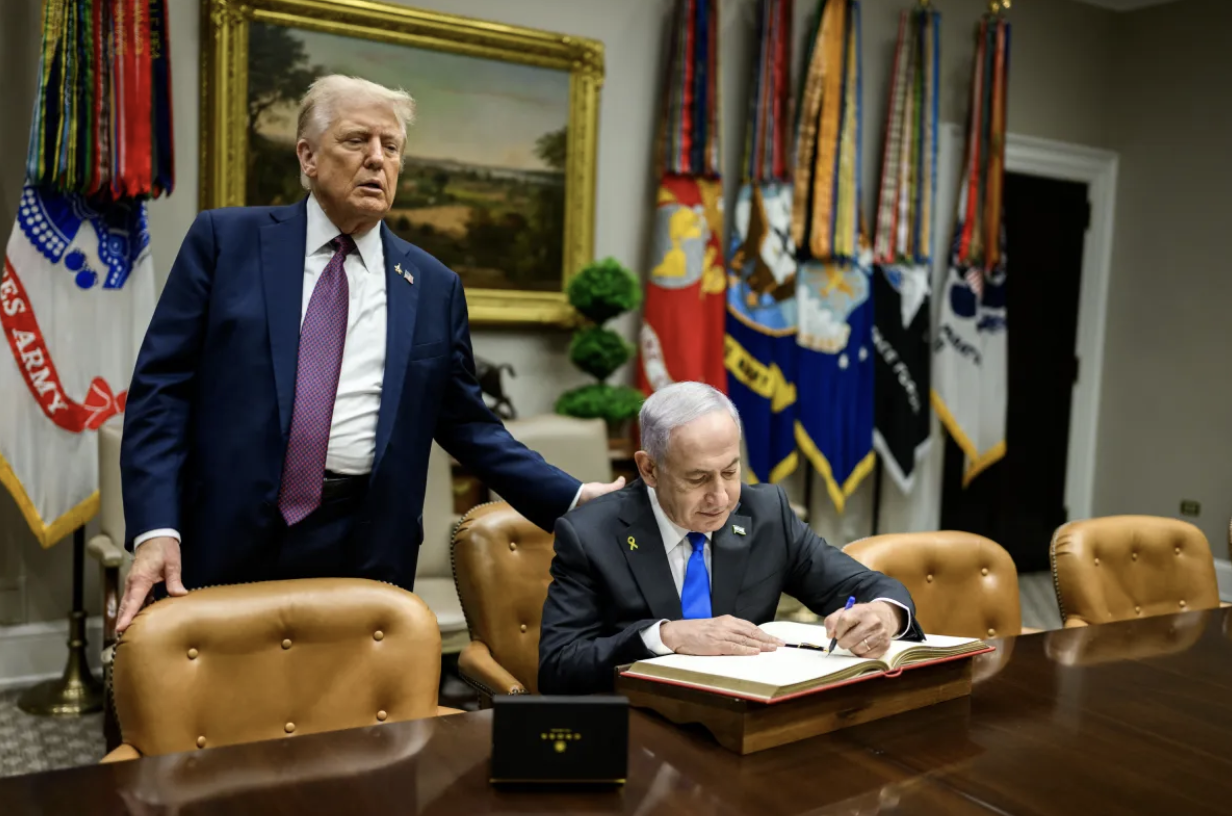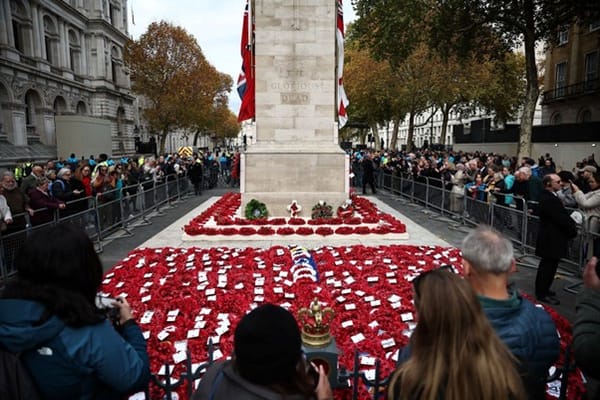Phase One: Ceasefire in Gaza Commences

Raaid Hussain, MA Middle Eastern Studies
Two years into the Israeli regime’s attack on the Gaza Strip which the UN has termed a genocide, Israeli and Hamas officials have come to an agreement for a ceasefire deal as of October 9th 2025. US president Donald Trump announced the breakthrough on a Truth Social post in which he stated ‘ALL of the hostages will be released very soon and Israel will withdraw their troops to an agreed-upon line.’
The agreement comes after Israeli and Hamas officials gathered in Cairo early this week to indirectly discuss the 20 point peace plan outlined by President Donald Trump. Key figures in the talks include US special envoy to the Middle East Steve Witkoff, Hamas’ top negotiator Khalil Al-Hayya and Israel's top negotiator Ron Dermer. The plan, which was announced by President Trump alongside Israeli Prime Minister Benjamin Netanyahu on September 29th in Washington D.C. marks the seventh official plan to be proposed by the US since 1947.
The plan outlines an immediate ceasefire followed by a comprehensive exchange of Israeli hostages and Palestinian prisoners, after which Israeli forces are expected to conduct a staged withdrawal from Gaza based on ‘standards, milestones and timeframes… agreed upon by the IDF (Israel Defence Forces).’ Hamas would be expected to fully disarm and have no involvement in the future governance of Gaza, which will instead be transitioned to a technocratic Palestinian committee, overseen by a ‘board of peace’ headed by Donald Trump and that will involve former UK prime minister Tony Blair.
The plan promises a large-scale humanitarian and reconstruction effort managed by the UN and other International agencies, alongside a ‘Trump Economic Development Plan’ to rebuild Gaza’s infrastructure. Hamas members who disarm would receive amnesty or safe passage, and all armed factions would be disbanded under International supervision.
The plan comes in the backdrop of growing global condemnation of Israel’s genocide in Gaza, as seen through the UN General Assembly, particularly following Israel’s unprecedented attack on Qatar which killed five individuals, as they pushed for a response to the destruction in the form of the peace plan. The plan received worldwide acceptance and praise particularly from major Muslim nations involved in its creation. The foreign ministers of Egypt, Jordan, UAE, Indonesia, Pakistan, Qatar, Saudi Arabia, and Turkey released a joint statement praising the plan and affirming ‘readiness to work with the United States and all parties to finalise the agreement and support its implementation.’
It is important to note that the construction of the plan received no input from governing Palestinian authorities. Despite this, following Trump's announcement of his plan, he took to Truth Social to urge Hamas to ‘MOVE FAST’, warning of ‘MASSIVE BLOODSHED’ if the plan was to be rejected. Hamas officials responded on October 3rd, agreeing to the release of hostages and willing to enter negotiations with mediators, however they rejected other parts of the plan including disarmament.
Following this response from Hamas President Trump stated: Israel must ‘immediately stop bombing Gaza’, adding that Hamas was ready for ‘lasting peace.’ Yet, Israeli forces continued bombarding Gaza, killing another 104 individuals between October 3rd and 6th.
The agreement to phase one of the plan between Israel and Hamas represents the most notable breakthrough in two years of genocide, invoking joy and optimism worldwide. Yet, many remain sceptical of what is yet to come. Critics point out the lack of sovereignty given to Palestinians in the plan, as seen through foreign governance in the region and through the ‘board of peace’, as well as in the lack of recognition for an independent Palestinian state, with Netanyahu fully rejecting the idea. Another point of contention is the vagueness of some aspects of the plan, particularly in regards to Israeli withdrawal from Gaza which is largely left up to the IDF.
Concerns centre around Israel's previous record of violating peace treaties, much like the Gaza truce deal made earlier this year, which collapsed without getting past the first stage, as well as its current daily violations of a ceasefire in Lebanon. Thus, much of the agreement relies on implementation by foreign mediators, most notably President Trump who announced plans to visit the Middle East following phase one of the deal.
Following approval of the deal, a ceasefire is expected to begin in Gaza, which will then be followed by a partial withdrawal of Israeli troops to an agreed upon line, leaving them controlling about 53% of the Strip. Hamas will then have a 72 hour window to begin releasing the 20 living hostages, whilst Israel will release nearly 2000 Palestinian detainees. Israel will allow 400 aid trucks to enter Gaza daily during the first five days. There have been few details on what else has been agreed.



